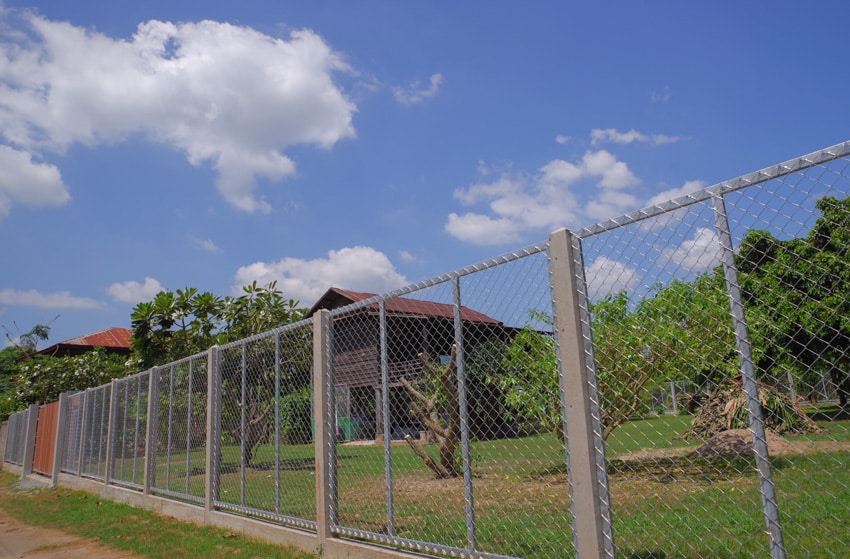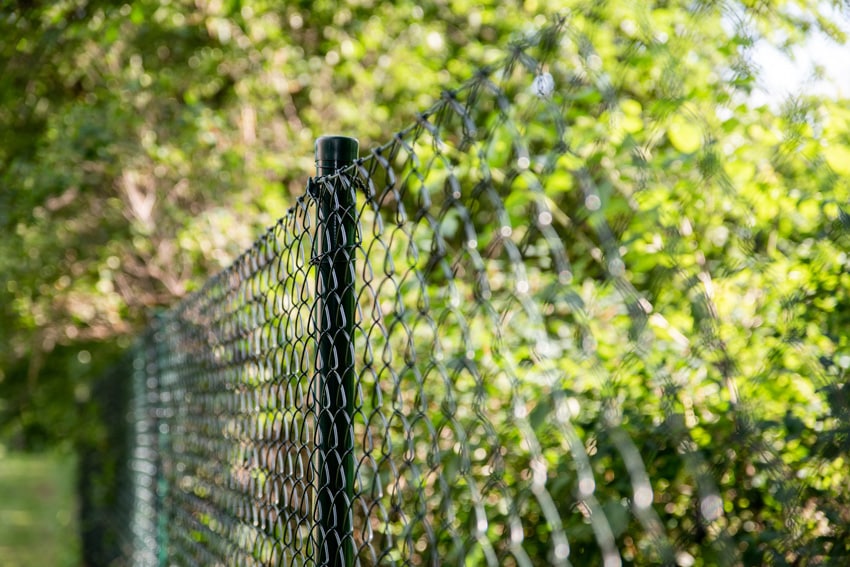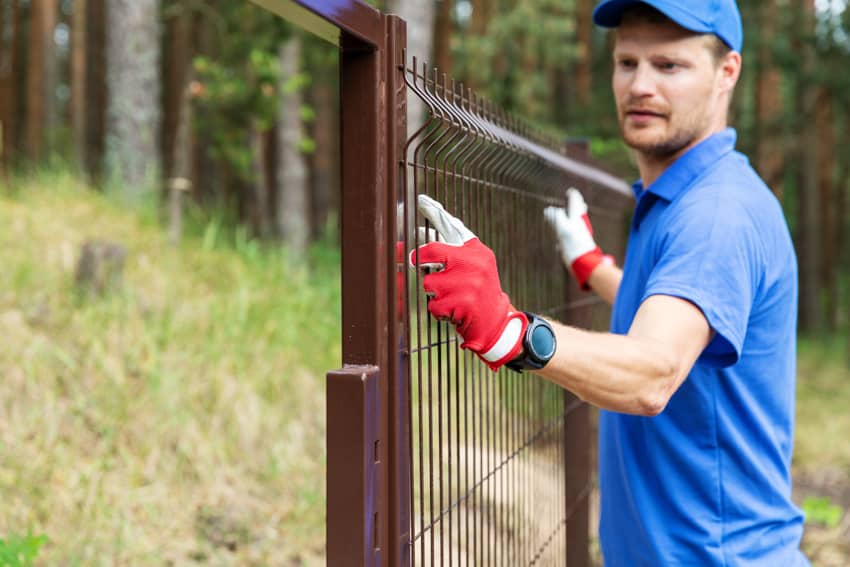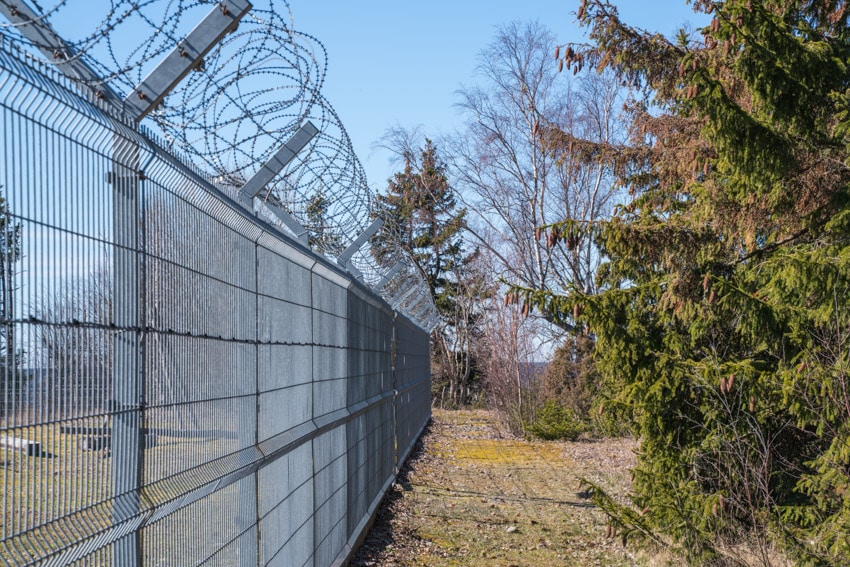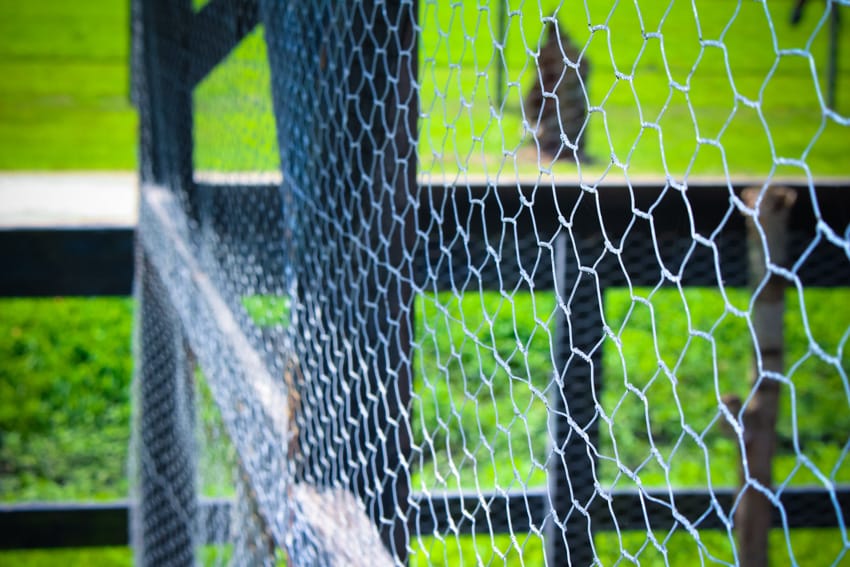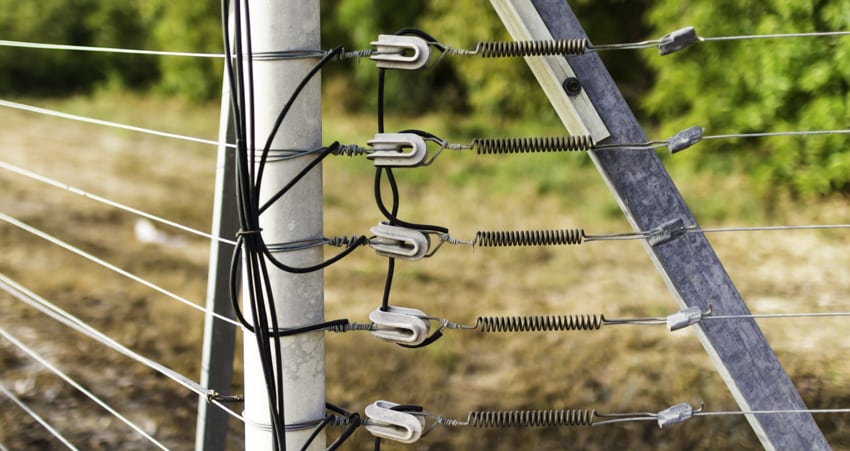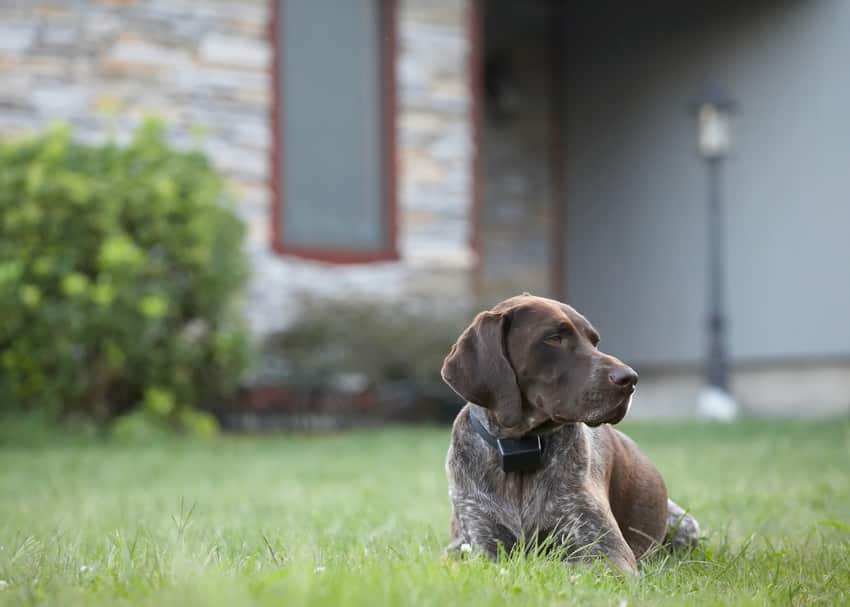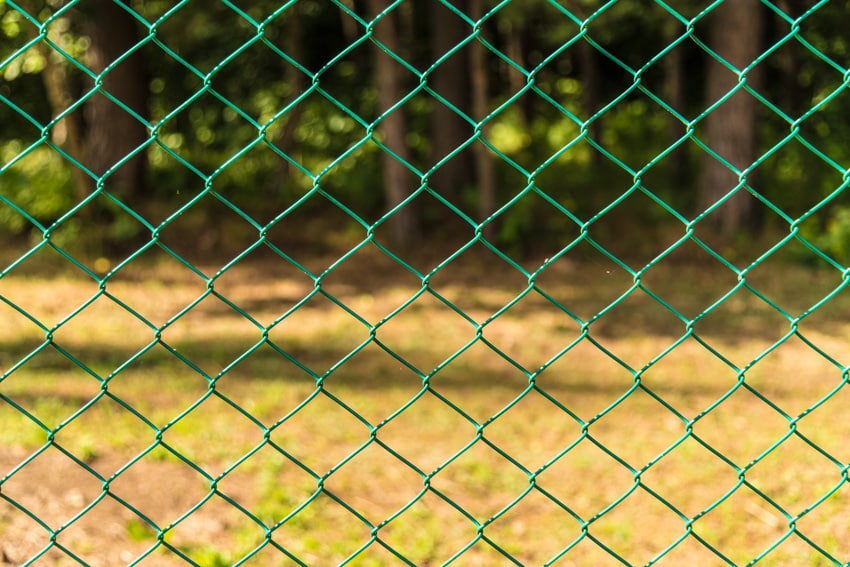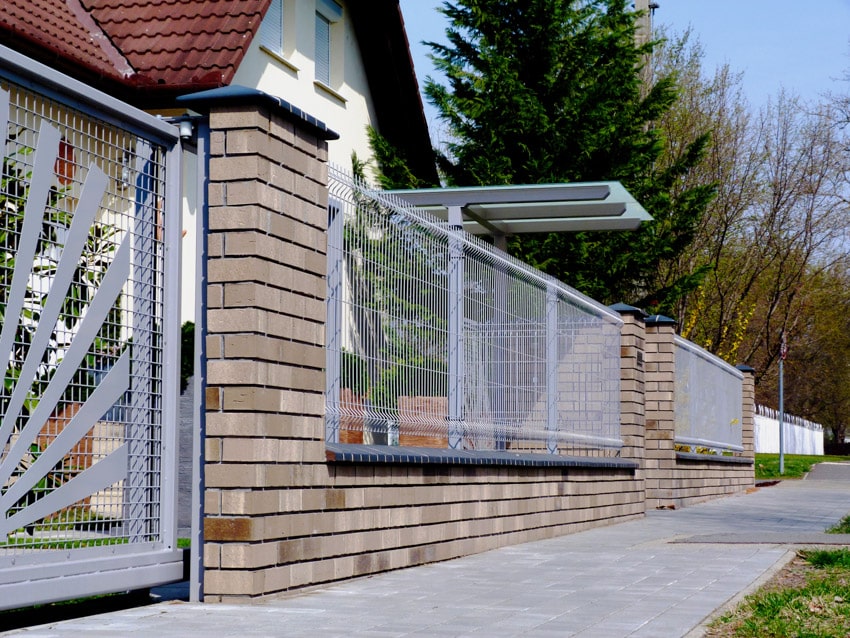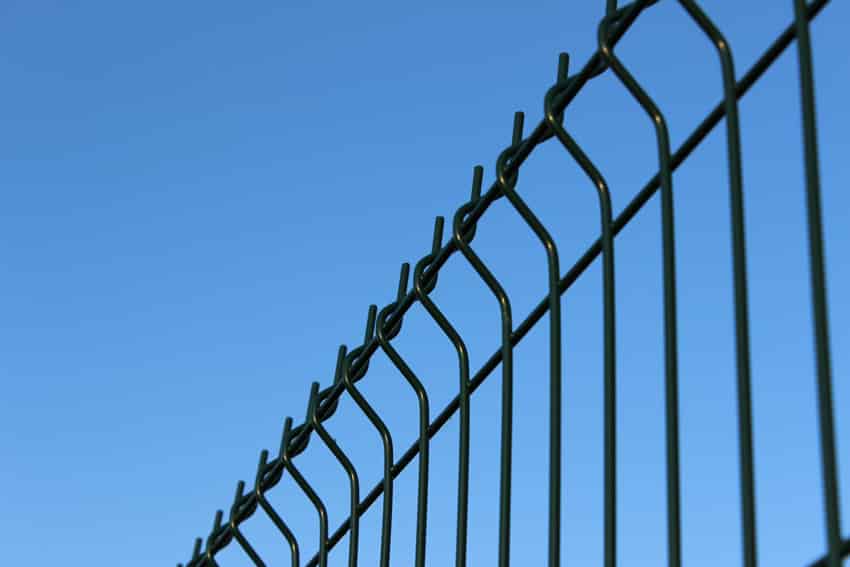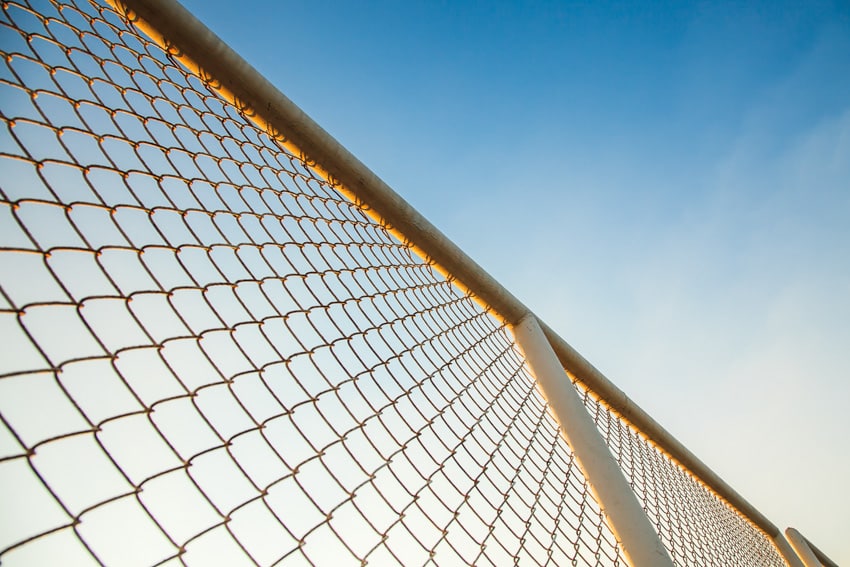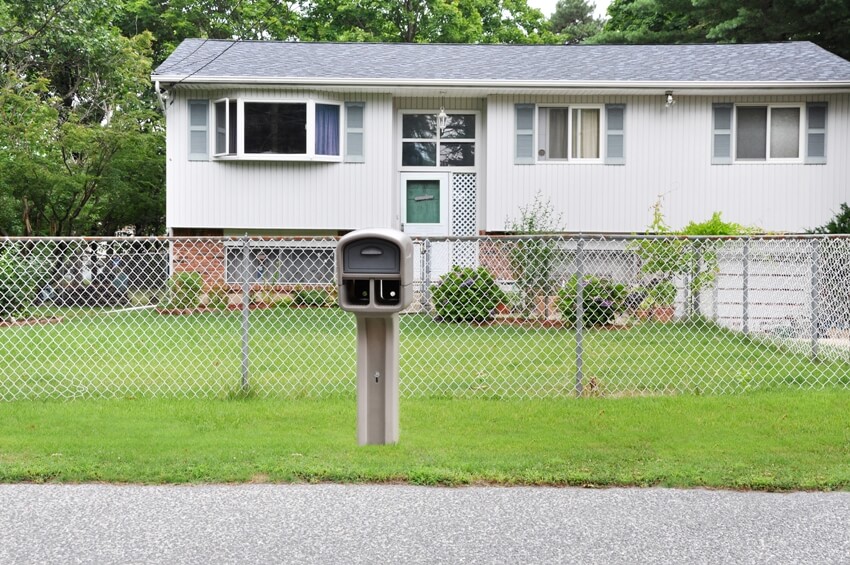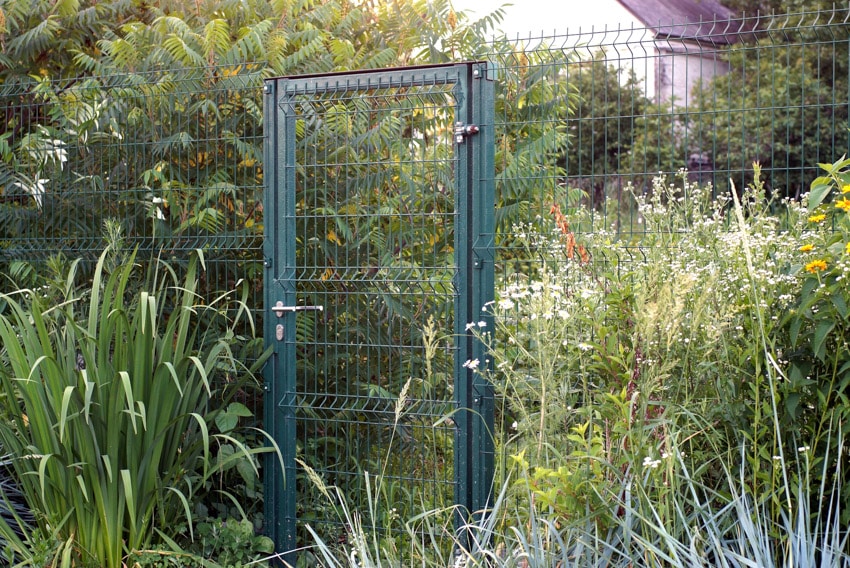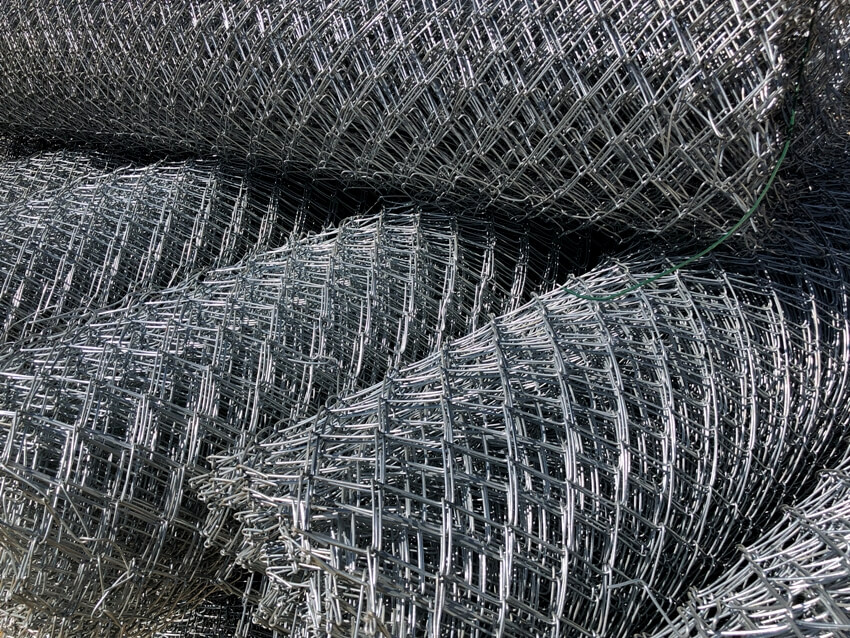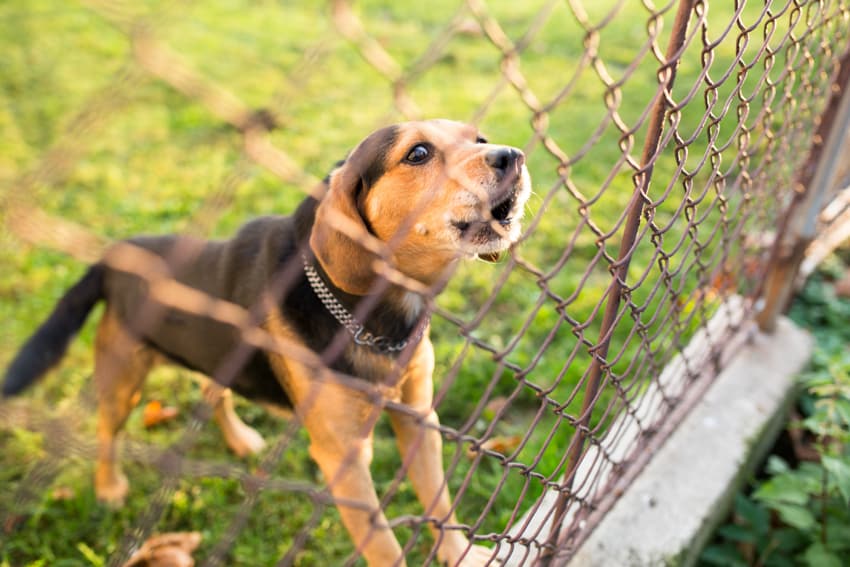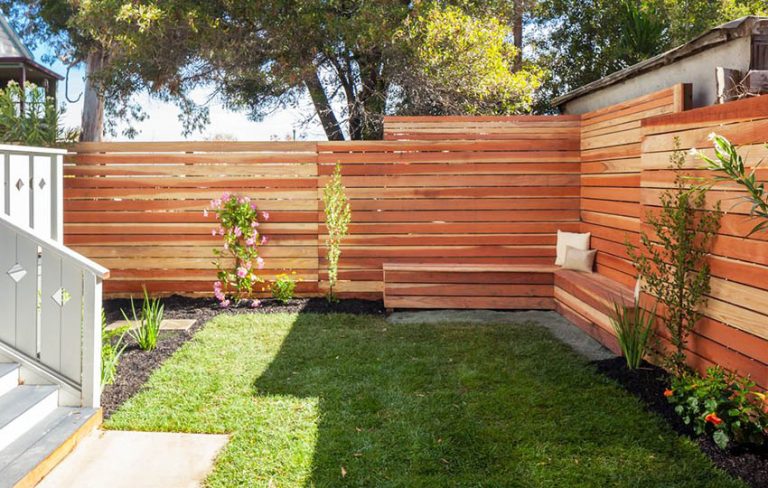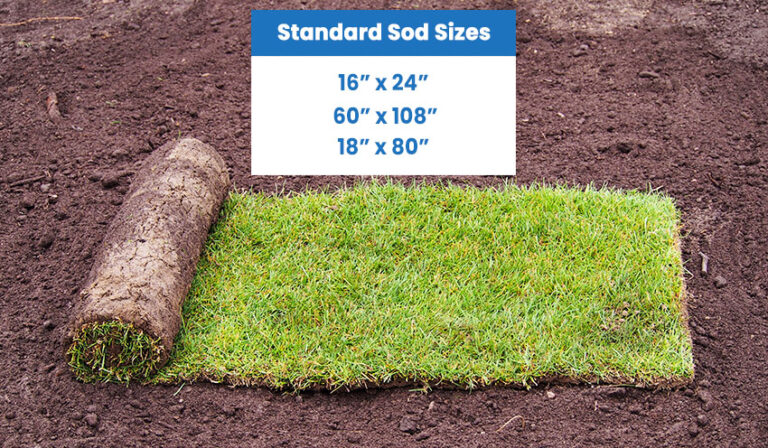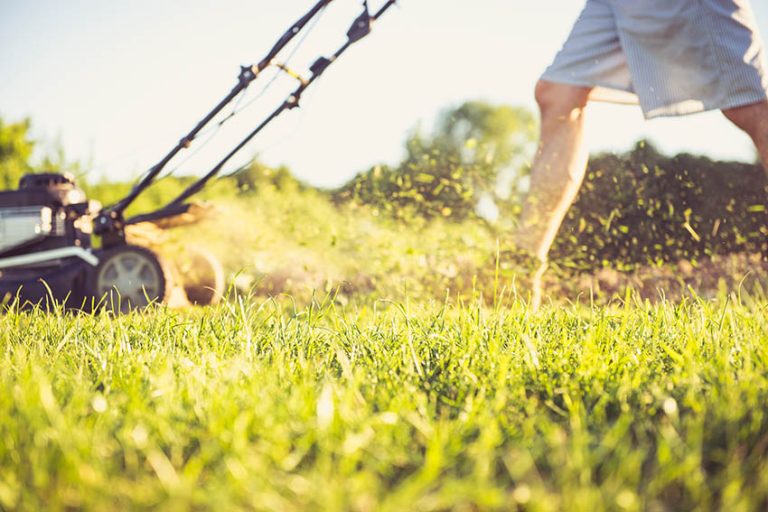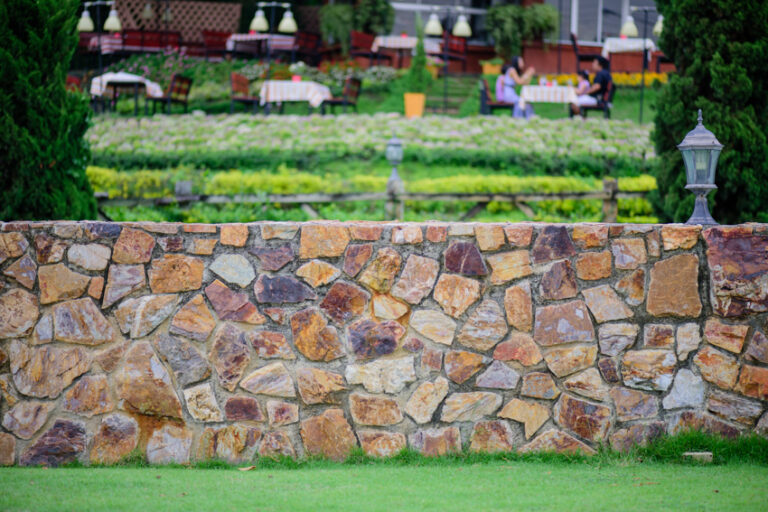Types of Wire Fences (Materials & Designs)
Here’s our types of wire fences design guide including different uses, materials, strongest and cheapest options. See the best choices for wire fences for your home.
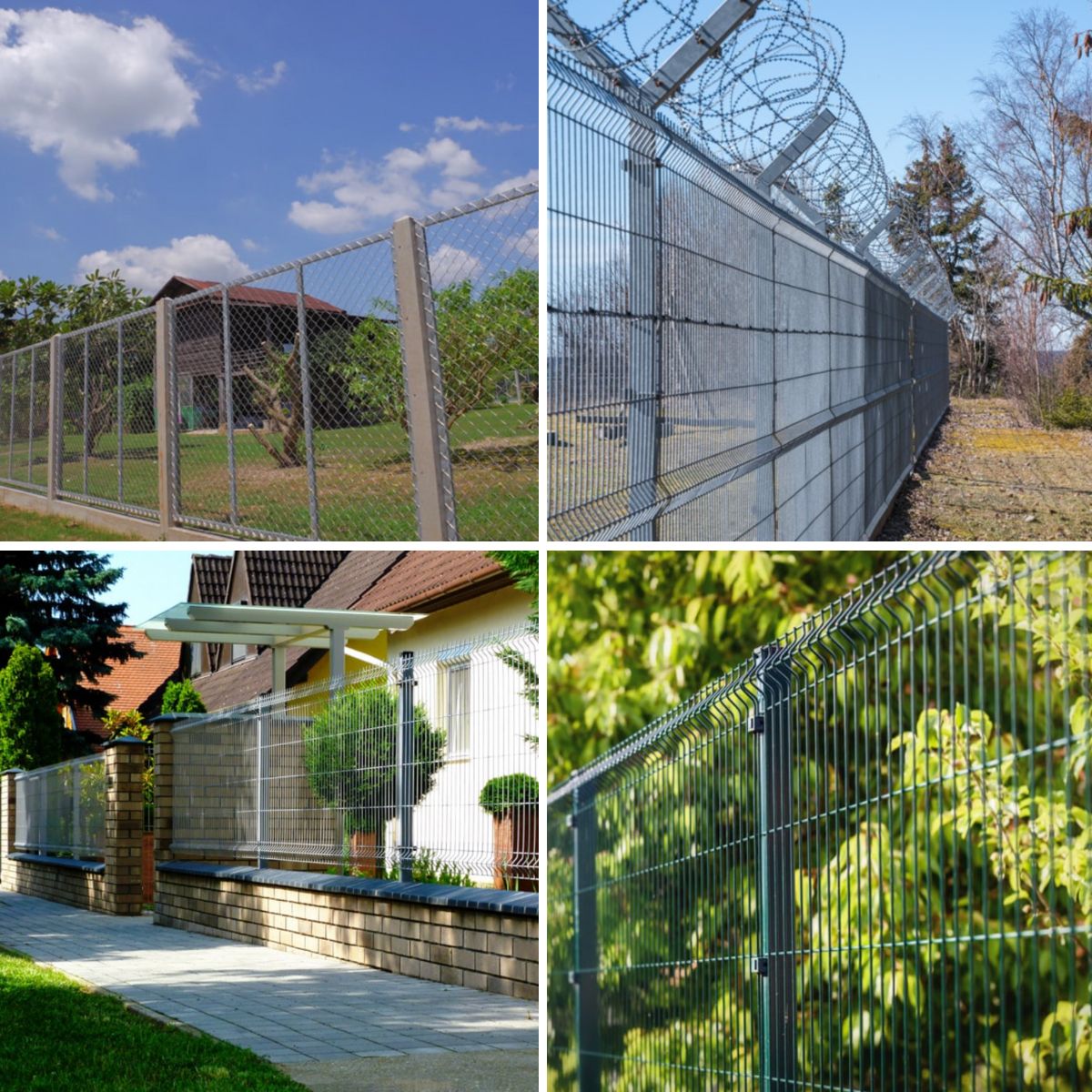
There are different types of wire fencing and each has its own use depending on the need. Whether you want to secure an area for security reasons, keep out animals, or mark a perimeter, there is a specialized metal fencing for that task.
In this article, we will talk about wire fencing and all the categories under it. Hopefully, as you read on, you’ll find the type of wife fencing to suit your needs and budget. [toc]
What is Wire Fencing?

In residential places, fencing nets is used to protect the property against thieves and intruders and to secure the pets in your yard.
Yes, boundary mesh fences are highly essential and they play a huge role in our lives. They can be used either for aesthetic, security, safety, industrial, or agricultural purposes.
There are several wired fence designs – woven, welded, barbed, electric, and chicken. Each metal fencing type serves its own purpose and it has its pros and cons. But overall, installing the right wired fence will undoubtedly protect and improve your home or business site.
Different Types of Wire Fencing

Woven Type Fencing
Woven type fencing is generated by means of weaving strands of wire into different configurations. The most popular sample of a woven wire fencing style is the chain link design.
This type of wired fencing highlights a loose configuration that can be bent and stretched as it contains an excellent level of flexibility.
But since the pieces of wires have been interwoven, the whole wired fencing might start to unsnarl once pieces of wires becomes cut or broken.
What are the uses of woven metal fencing? Well, this type of fencing is generally used for perimeter fencing around yards, security or containment of pets, or for decorative application purposes.
Woven wire fences are also widely used for playgrounds, fenced backyards, and other commercial areas. To string a woven metal netting, specifically a chain link fence, a fence stretcher will be needed. Installing a chain link fence without the assistance of this tool might result in ugly, disorganized, and poor-functioning wire fencing.
Welded Wire
Unlike woven mesh fences, welded wired fences have a much more attractive design. They also offer more decorative applications.
However, welded wired fencing can also be built from industrially durable materials which is a more advisable option for urban and rural uses.
Welded mesh fencing is normally and preferably used for both commercial and residential uses. It is generally used for securing residential and commercial properties, community or residential pools, parks, walkway designs in nature reserves, military areas, prisons, dog runs and kennels, gardens, farms, and ranch gates.
Barbed Wire
This type of enclosure fencing is economical and it doesn’t normally require a professional to install it.
Barbed wire fencing is composed of twisted steel pieces of wires and it is completely different from the woven metal fence. Instead of the strands being intertwined with one another, the strands of a barbed-wire fence are entwined together.
The introduction of barbed wire in the 1870’s revolutionized fence design . Barbed wire and the 4- or 5 – strand barbed wire fence have since become the standard against which all other wires and fence designs are measured. – Rangeland Fencing Systems State-of-the-art Review, Ronald Jepson, R. Garth Taylor, Dan W. McKenzie
Barbed pieces of wires are structured at regular intervals. People and their pets should not attempt to jump off or break through a barbed metal netting as the dangerous spikes can cause wounds and injury.
Barbed wires are generally used for places that need maximum security. Since the barbed metal fencing spikes can cause injuries, thieves and intruders won’t attempt to jump through them.
However, barbed perimeter mesh is also normally used to separate lines between ranches containing cattle and livestock, restricting prisoners, and protecting gardens from pests and military areas.
A barbed metal fencing is usually installed across a fence line by stretching and threading it from the post to the post on the other side. These posts are typically made out of wood and the tension is what keeps the barbed metal fencing in its position.
It can be easy to install this type of fence; that’s why most homeowners are selecting this type of barbed perimeter mesh.
However, when installing it, you must wear durable protective gloves and use a staple gun. The wired enclosure must be stapled first to the post, then it should be pulled tightly before attaching it to the other post.
Chicken Wire
Chicken wire is also known as poultry netting. This type of fencing normally comprises mesh or wired strands to contain chickens specifically.
It is customarily made out of thin and flexible galvanized steel strands of wires with hexagonal spaces.
Chicken enclosure fences are sometimes used to contain small animals or to protect a specific property such as plants from your pets.
Electric Wire
Electric wire fences are generally used to protect high-security areas. They are usually made out of thin aluminum or steel.
Yes, based on its name, it is designed to produce an electric shock to intruders and trespassers. The electrified fences that are used for agricultural uses contain a small amount of voltage, enough only to give a minor spark.
Regarding industrial or commercial purposes, the electric boundary mesh fence might contain a higher voltage to knock out the intruder.
For military or security uses, a lethal amount of electricity might be infused in the wired enclosure. This means the person who will touch the fence might get severely electrocuted and die afterward.
Nowadays, electric wire fences are widely used for agricultural advantages. They are installed to restrict animals like sheep, poultry, or horses.
Once they come in contact with the fence, they will experience a mild spark and they will stay away.
However, electric-wired enclosures are also used for keeping the animals away from airports, restricting parks, confining animals in the zoo, and securing private properties. In terms of installation, professional experience is highly required.
What Is an Invisible Fence?
An invisible fence is not your ordinary fence. Invisible fence systems require expert installation and professional pet training sessions. The main purpose of an invisible fence is to contain your pets, especially your dogs.
Normally, an invisible fence technology uses advanced radio frequencies to function. These digital signals must be enabled so that the system will continue to work.
It is controlled using its contemporary control panel, and it is usually located in discreet places such as the garage.
Along with the control panel is the cable, which keeps it connected to the digital radio signal built around your residential property. A field of the signal is generated on all sides of the built cable around your property, acting as your pets’ protective borderline.
However, the signal is detected by the computer collar receiver, which is worn by your pet. Once the collar receiver of your pet encounters the field of signal, a warning tone to your pet will be generated.
Then, it will provide a soft and safe static correction to remind your pet that it has crossed the limits. But for you to know where the boundaries are, there will be boundary flags that represent the signal field.
Metal Fence Materials
Several materials are used for creating or coating wire fences – here are some of them:
Aluminum
This material is one of the most popular types of wire fences. Aluminum is a lightweight and rust-free material. It can withstand the damages caused by rain and other moisture-related problems.
A wire that is made out of an aluminum material can be used for making electric fences as aluminum is a great electricity conductor.
A lot of benefits are found in aluminum-based wires for fences. Compared to copper, aluminum is more flexible and lighter, making it very easy to work with. It is also a much cheaper option than metal. However, aluminum is not that durable compared to stainless steel.
Stainless Steel Wire
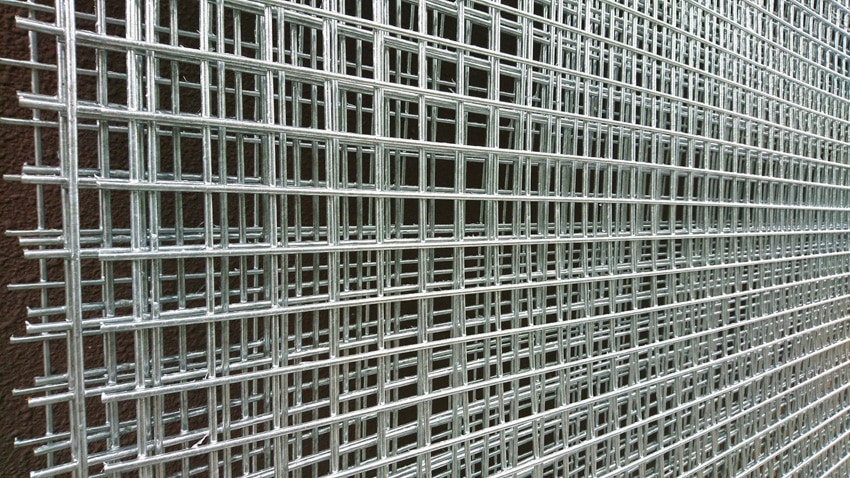
Although it could be more pricey compared to other wire materials, stainless steel would be an excellent option as it does not corrode over time.
Stainless steel does not have to be galvanized. It is even more robust and long-lasting than GAW wires. This type of wire is very durable. It can withstand all kinds of weather and it can last for a very long time as it does not rust.
Moreover, stainless steel is highly resistant to fire and heat. It can even maintain its durability during high-level temperatures.
Poly Wire
This material is normally used when creating electric wire fences and where visibility is required. Poly wire uses vivid-color fiber wirings twisted with wires that can be electrified.
Just like stainless steel, poly wire is also rust-free and it is a great option for containing necessary livestock such as horses.
Poly wire can be easily repaired, spliced, adjusted, and tightened. To tighten it efficiently, you can try using a poly wire tightener to preserve the tension of the wire. Furthermore, a poly wire can be used over and over again.
Coated Fence
There are some efficient materials in terms of coating wire fences and each one of them offers various application procedures. Also, each type of coating has its pros and cons. Here are some of the types of coating to protect the wire fences:
Galvanized Wire
This type of wire is treated or coated with a protective and durable coating like zinc. This zinc coating enables the wire to withstand rusting and perishing.
There are two types of galvanized wire – GBW (Galvanized before Weld or Weave) and GAW (Galvanized after Weld or Weave). Let us first talk about the first type of galvanized wire.
Galvanized before Weld or Weave (GBW): GBW wires are already galvanized before it has been woven or welded. If the wire is welded, the welding process burns away the galvanization process.
Compared to GAW, this process is less pricey. Meaning, there will be small parts where moisture can enter, resulting in deterioration. And that is the drawback of GBW.
Galvanized after Weld or Weave (GAW): Compared to GBW, GAW is much more durable and long-lasting as it has been galvanized after the wire has been welded or woven.
This process might be more expensive than GBW, but it will be worth every penny as it will not need that much maintenance and repair, unlike GBW.
GAW wires have already been woven or welded before they are protected with zinc coating. This ascertains that there will be no parts that are left unprotected and no zinc content would go to waste.
GAW wires are more recommended for outdoor uses as they can withstand all types of weather better than GBW wires.
Vinyl Wrapped Wire
This wire fence material is used to coat a welded or weaved wire fence. It uses vinyl coverage to keep the wires protected.
Coating your wire fences with vinyl can produce desirable results durability, longevity, and appearance-wise. The majority of vinyl-coating wire fences are also galvanized.
Vinyl-protected wire fencing is frequently built all over the yard to restrict your pets. It can also be built around swimming pools and playgrounds to secure the kids. See more pool fence ideas here.
Moreover, vinyl-coated wire fences trap and catch animals such as lobsters or decorate panel additions for deck rails.
Powder Laminated Wire
This type of coating is composed of thick paint in powder form that is mainly used for covering metal fencing made out of steel.
This is also a good choice in terms of keeping your metal fencing protected. Powder-coated wires can generally withstand harmful UV rays, corrosion, and moisture.
Normally, powder-coated types of metal fencing do not contain volatile organic compounds. Meaning, it is very environmentally friendly. See more garden fence ideas here.
E-coating Wire
E-coating stands for electroplating. This coating process is occasionally applied under a powder coating to make the wired fencing extra durable and corrosion-resistant.
To successfully achieve the e-coating process, the wires should be dipped in paint and it must also be charged electrically. This method will generate a reaction that will reinforce the coating’s durability.
What Wire Gauge for Fencing Is the Strongest?
The diameter or thickness measurement of wire is called gauge. Technically, its measurement is based on how many times the steel wire could be drawn or pulled. Nowadays, several advanced types of equipment are used to get the diameter of the enclosure fencing accurately.
However, in short, the larger the measurement, the thinner and less durable would be the quality of the fencing net.
Yes, talking about metal fencing, things might seem the opposite. For example, a 24-gauge wiring is thinner, smaller, and weaker than 8-gauge wires. This is why the strongest gauge wire fencing always has a low gauge or low diameter.
This principle can be compared to a bass guitar – the lowest-measured strings are the thickest and most durable. Comparably, the lowest wiring gauge is the strongest.
For extra-strong and durable types of wired fences, you must go for gauges 8 to 11.5. The possible thinnest gauge would be 20 and above.
What Is The Cheapest Wire for Fencing?
Chicken Wire Fence: Among the types of mesh barriers that we have just discussed, enclosure fencing is the cheapest selection. It is arguably the most affordable and practical way of keeping away or confining animals.
Chicken wire fences do not usually have that appealing look and are normally made of thin quality. However, it can be easy to form with wood supports like cedar or oak to make it look more attractive and decent.
The usual cost of chicken fencing net ranges from $0.10 to $0.30 per linear foot.
Barbed Wire Fence: Barbed metal fences are normally seen in farmlands and yards and are not meant to improve outdoor space.
They focus more on improving security by keeping people, specifically intruders and animals, away from your property. Barbed metal netting is the second cheapest fencing net available.
Generally, the cost of a barbed fencing net can be around $1.50 to $2 per foot.
Vinyl-coated Wire Fence: This has been one of the most common types of metal fencing nowadays because it offers a modern appearance. But it can appear cheaper than metal or wood when it is not carefully created.
However, vinyl-coated metal fencing is easy to install and is very robust. It does not attract termites and is normally made of lightweight materials.
This option is available in plenty of designs, and it could be painted using your preferred paint color. The common cost of vinyl-coated metal fencing per foot is around $6 to $9.
What Is Better: Woven Or Welded Style for Fencing?
If you want to install safety boundaries, no doubt welded metal fencing is the better option.
If you want to secure your property and don’t want intruders to access your residence, welded metal fencing is the most preferred choice as it could be hard to tear.
Also, people or animals will have difficulty breaking through the inflexible intersections.
Welded boundary mesh fences are also normally built with small openings. Meaning there would be less possibility for detritus to fly in your area.
Regarding security, welded is also a better option as it does not provide a climbable finish. Woven metal fencing can be easier to climb with.
The small grids of welded boundary mesh fences are suitable for a confidential data center’s security. It would be hard for thieves to access that data and other secret information as these fences can be hard to pass through.
When it comes to storage purposes, welded enclosure fencing is also the ideal option because it is more versatile and durable. If you wish to extend the longevity of the things you are storing and you want to secure them properly, welded enclosure fencing could be the perfect selection.
Best Wire Material For Fencing
Stainless steel is potentially the best material when choosing among the different types of metal fences. It is the strongest and longest-lasting material. This material itself can already withstand corrosion and other dangerous chemicals. It can withstand all types of weather, and it does not get rusty over time.
Furthermore, it must not be galvanized or coated with some chemicals to be durable. Stainless steel has two types – 316 and 304. Stainless steel 316 offers a higher resistance in corrosion and it can withstand saltwater applications better than 304. However, 316 is normally more expensive.
Here is the summary list of the unique advantages and beneficial features of stainless steel:
• Can last much longer than GAW woven fencing
• Contains maximum durability and strength that can last for a lifetime
• Can powerfully resist corrosion, harmful chemicals, and rust
• Very ideal for places with a high accumulation of moisture
• Has an appealing and timeless look
• Easy to clean and maintain
• Can resist high and low temperatures
• Can withstand all types of weather
• Easy to cut, weld, fabricate, and shape
What Type of Wire to Use for an Underground Dog Fence
A stranded wiring is one of the recommended types of fencing nets you can use for an underground dog fence. It is made of thin copper wires woven to become one.
Compared to a solid core wire, a stranded wire can be less corrosion-resistant and less durable. But in terms of cost, stranded wires are the ideal selection.
Another type of netting that can be used for an underground dog fence is solid core fencing net, as I’ve mentioned before. It is constructed into one copper wiring.
It can be difficult to customize or work with but it has a more robust structure. Its corrosion resistance is also higher than stranded wires. Talking about the gauge, there would be two gauge wires to select from – 18 and 20.
Moreover, you must remember that combining two different net types is never advisable. Never change the gauge or type of netting while you are in the middle of making your project, as it can cause negative effects.
For more details bout designing a fence, check out our picks for the best fence design software. These programs can help you plan your yard layout and estimate the amount of materials you’ll need.

